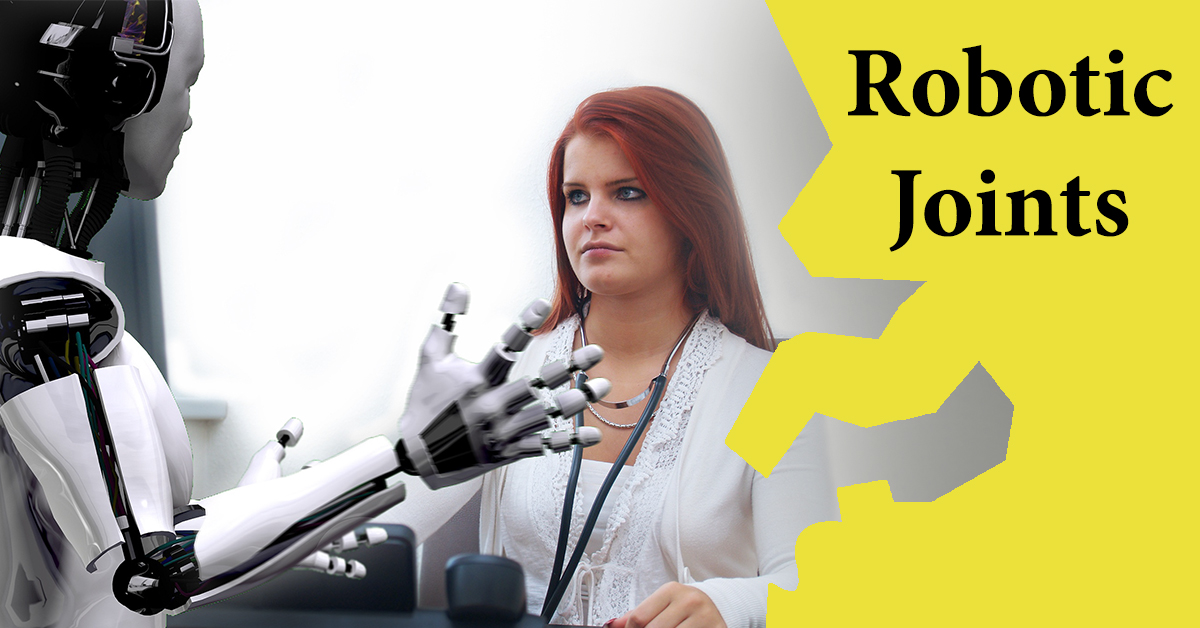Robotic joints are the basis of any robot’s ability to move and manipulate objects. Robotic joints come in many varieties, each with special characteristics. These include fixed joints, which do not occur any movement, prismatic joints, also known as linear joints, which allow linear movement along a single axis, and revolute joints, also known as hinge joints, which allow rotational movement around a single axis. We will dive deeper into the world of robotic joints in this article as we explore their types, uses, and actuation techniques. You’ll have a better understanding of robotic joints by the end of this article.
First, let’s consider a stationary Articulated Robot.

Later, we’ll talk about different joints.
additionally, some robots have rover systems as part of the robots. rover is simply the moving mechanism of the robot.

If we take articulating robots into consideration, we have to consider the degree of freedom (DOF). The number of independent position variables that must be specified in order to locate every part of a mechanism is known as the degree of freedom.

we will talk more about the degree of freedom in a mathematical way in the next articles.
let’s talk about some key parts of the robots
End effector
A robot arm’s end effector, which replaces the hand, is a tool or device that is attached to the ends of the arm.
The robotic Joints
Mechanical parts are called robotic joints .which allow a robot to move and manipulate objects. They can be found in a variety of types and configurations, such as revolute (rotary), prismatic (linear), and spherical (ball-and-socket) joints. The specific case and the degree of movement required determine the joint type to be used.
Different technologies, such as hydraulic, pneumatic, or electric motors, can be used to actuate robotic joints. Robotic joints may be embedded with sensors to deliver feedback on position, velocity, and other parameters in addition to enabling motion.
Mainly there are three types of basic movements in robotic joints
- rotation movement: rotation about the horizontal plane.
- Radial movement: movement of the end effector in radially
- Vertical movement: this movement change the height of the end effector

Mainly the joins can be divided into two types ;
- prismatic joint
- revolute joint
Prismatic joint
Prismatic joints make a linear motion with respect to another link. it makes relative movement between 2 links. the input link remains stay and the output link makes the translation movement.
there are two types of Prismatic joints
- Linear joint
- Orthogonal joint
Linear joint
the output link translate respect to inputlink

Orthogonal joint
The joint moves along the input link axis

Revolute joint
In robotics, a revolute joint, also referred to as a hinge joint, is a type of joint that allows rotational movement between two connected parts. it enables the rotational movement of a robotic arm.
it work like our th shoulder or elbow.
Minly there are three types of rotations are occurred the Revolute joints.
- Rotational joint
- Twisting joint
- Revolving joint
Rotational joint
This type provides rotational relative motion, with the axis of rotation parallel to the axes of the input and output links.

Twisting joint
Even though there is rotary motion at this joint too, the rotational axis is parallel to the axes of the two links.

Revolving joint
In this type of joint, the output link’s axis is perpendicular to the joint’s axis of rotation and the input link’s axis is parallel to it.

Those are the all joints in robotics
Additionally, there are complex joints are used as robotics joints. but in real-world applications,the prismatic joint and revolute joint are used commonly.
Ball joints
now let’s identified the real-world application of joints in robotics.
ROT3U 6DOF Black Aluminium Robot Arm Mechanical Claw Robotic Claw Kit (Unassembled Parts Without Servos)

Yahboom Adults AI Smart Robot Raspberry Pi Robot Dog Python Programmable 12 Joints Bionic Mechanical Dog DOGZILLA

Revolute and Prismatic joints are the main types of joints and also the Revolute joints can be devided into another three types such as Rotational joint,Twisting joint and Revolving joint



You put forward some insightful points within this entry, but aren’t you overlooking something crucial?
Hi! Would you mind if I share your blog with my zynga group? There’s a lot of folks that I think would really appreciate your content. Please let me know. Many thanks
Youre so cool! I dont suppose Ive learn anything like this before. So nice to find any individual with some original thoughts on this subject. realy thank you for starting this up. this web site is one thing that is needed on the internet, somebody with a bit originality. helpful job for bringing one thing new to the internet!
I like this internet site because so much utile material on here : D.
Spot on with this write-up, I actually suppose this web site needs much more consideration. I’ll most likely be again to read much more, thanks for that info.
I agree with your points, good post.
It is best to participate in a contest for top-of-the-line blogs on the web. I will recommend this web site!
Your positivity radiates through your posts. Thanks for being a source of light in the online community. The world needs more voices like yours.
very interesting topic, great post.